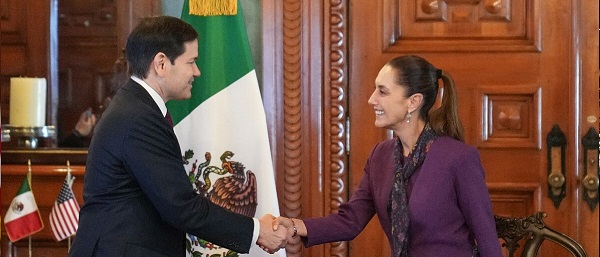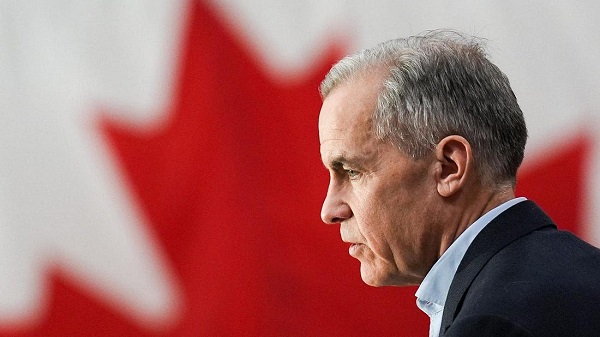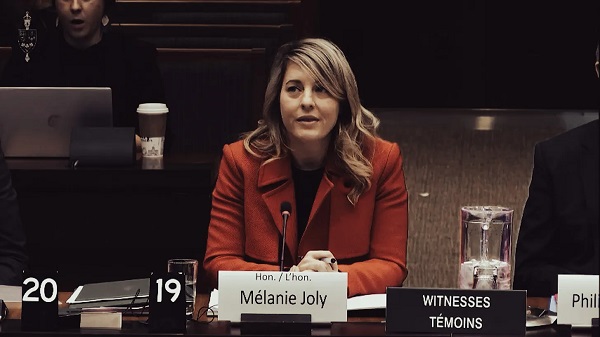Business
Publicity Kills DEI: A Free Speech Solution to Woke Companies

For years, major corporations bragged about their wonderful Diversity, Equity, and Inclusion (DEI) programs. They’re good for business and morally correct, they said. So why are they now cutting those programs?
Robby Starbuck says these programs once got a lot of buy-in, because people wanted to be nice! But DEI came to mean much more than just being nice.
Starbuck says what it looked like in practice was “crazy trainings” and “overtly racist hiring practices.” Now lots of people agree with him.
Companies actually take notice when Starbuck tells his many followers about their DEI programs. Often the programs get dropped.
That’s the power of free speech.
After 40+ years of reporting, I now understand the importance of limited government and personal freedom.
——————————————
Libertarian journalist John Stossel created Stossel TV to explain liberty and free markets to young people.
Prior to Stossel TV he hosted a show on Fox Business and co-anchored ABC’s primetime newsmagazine show, 20/20. Stossel’s economic programs have been adapted into teaching kits by a non-profit organization, “Stossel in the Classroom.” High school teachers in American public schools now use the videos to help educate their students on economics and economic freedom. They are seen by more than 12 million students every year.
Stossel has received 19 Emmy Awards and has been honored five times for excellence in consumer reporting by the National Press Club. Other honors include the George Polk Award for Outstanding Local Reporting and the George Foster Peabody Award.
_ _ _ _ _ _ _ _
To get our new weekly video from Stossel TV, sign up here: https://www.johnstossel.com/#subscribe
_ _ _ _ _ _ _ _
Business
The Liberal budget is a massive FAILURE: Former Liberal Cabinet Member Dan McTeague

Prime Minister Mark Carney tabled his government’s long-overdue budget yesterday and took the same approach as his predecessor – spend, spend, spend.
Canada’s deficit is now a staggering $78 BILLION. To make matters worse, Carney doubled down on the industrial carbon tax.
Dan McTeague explains in his latest video.
Business
Pulling back the curtain on the Carney government’s first budget

From the Fraser Institute
By Jake Fuss and Grady Munro
The Carney government will spend more, run larger deficits and accumulate more debt than was previously planned by the Trudeau government.
In the 1939 film the Wizard of Oz, Dorothy and her companions travel to the Emerald City to meet the famous Wizard of Oz who will solve all their problems. When first entering the Wizard’s chambers, the group sees a giant ghostly head that meets their expectations of the “Great and Powerful Oz.” However, later on in the film (much to their disappointment) we learn that the Wizard is nothing more than an ordinary man operating a machine behind a curtain.
Canadians might feel a similar kind of disappointment about the Carney government’s first budget tabled on Tuesday. Prime Minister Carney promised a “very different approach” than that of his predecessor regarding Ottawa’s finances, and at first glance the budget appears to be this new approach. But when you pull back the curtain, it’s simply an escalation of the same failed fiscal policies Canadians have suffered for the last decade.
For context, the Trudeau government’s approach to government finances was record-high levels of spending, persistent deficits and massive debt accumulation. The Trudeau government created a fiscal mess, and as a “responsible fiscal manager” the Carney government has promised to clean it up.
To that end, the Carney government now separates spending into two categories: “operating spending” and “capital investment.” Capital investment includes any spending or tax expenditure (e.g. tax credits and deductions) that contribute to the production of an asset (e.g. infrastructure, machinery or equipment). Operating spending includes everything else, and is supposed to represent “day-to-day” government spending.
The government plans to balance the “operating budget”—meaning it will match operating spending to revenue—by 2028/29, while leaving capital investments to be financed through borrowing. Importantly, when calculating the operating balance, the government counts revenues that are foregone due to tax expenditures that are considered to be capital investments.
To help find the savings needed to balance its operating budget by 2028/29, the government initiated a “Comprehensive Expenditure Review” this past summer—the budget reveals the review’s results. Part of the review included a long overdue reduction in the size of the federal public service, as the government will cut 16,000 positions this year, and reach a total reduction of almost 40,000 by 2028/29 compared to levels seen two years ago. As a result of this spending review, the budget projects spending in 2028/29 will be $12.8 billion lower than it otherwise would have been.
This is the fiscal picture the Carney government is focusing on, and the one it undoubtedly wants Canadians to focus on, too. When taken at face value, balancing the operating budget, initiating a spending review, cutting the federal bureaucracy, and focusing on greater investment would certainly appear to be a different approach than the Trudeau government—which made no meaningful effort to balance the budget or restrain spending during its tenure, grew the bureaucracy, and allowed business investment to collapse under its watch.
But here’s the problem. When you pull back the curtain, all the rhetoric and accounting changes are just a way to obscure the fact the Carney government will spend more, run larger deficits and accumulate more debt than was previously planned by the Trudeau government.
Both operating spending and capital investment (which represents either additional spending or foregone revenue) impact the bottom line, and by separating the two the Carney government is simply obscuring the true state of Ottawa’s finances. If we ignore the government’s sleight of hand and instead compare total government spending against the revenues that are actually collected, the true size of the budget deficit this year is expected to equal $78.3 billion. Not only is that considerably more than the “operating” deficit the government is focusing on, it’s also nearly double the $42.2 billion deficit that was originally planned by the Trudeau government.
The story is similar for years to come. While the Carney government claims it will balance the operating budget by 2028/29, the overall deficit will be $57.9 billion that year. Over the four years from 2025/26 to 2028/29, overall deficits under the Carney government will equal a combined $265.1 billion. In comparison, the Trudeau government had only planned to run deficits equaling a combined $131.4 billion during those same four years—meaning the Carney government plans to borrow more than twice as much as the Trudeau government.
Driving this increase in borrowing is a combination of lower revenues and higher spending. From 2025/26 to 2028/29, the Carney government expects to collect $70.5 billion fewer revenues than the Trudeau government had previously projected. This difference likely comes down to a combination of the economic impact of U.S. tariffs along with various tax measures implemented by the Carney government that lower revenues (including cancelling a proposed increase to capital gains taxes and cutting the bottom federal personal income tax rate).
On the flip side, the Carney government plans to spend $63.4 billion more in total than the Trudeau government due to the introduction of considerable new spending commitments (notably on defence and housing), and the expectation of higher interest payments on its debt. The reality that spending is only set to rise under the Carney government stands in stark contrast to the prime minister’s rhetoric regarding “austerity” and the “ambitious savings” found by the government’s so-called spending review.
Higher spending and larger deficits will help grow the mountain of federal debt. By 2028/29, the Trudeau government had originally projected that total government debt would reach $2.6 trillion—which, based on the budget forecasts, would represent 72.2 per cent of the overall economy. The Carney government’s fiscal plan now puts total federal debt at $2.8 trillion by 2028/29, or 78.6 per cent of the overall economy. For perspective, the last time total federal debt pushed 80 per cent of the economy was during the 1990s when Canada teetered on the brink of a fiscal crisis.
Finally, the government’s approach to spending and the deficit doesn’t seem to be in line with what Canadians wanted to see from this budget. A poll conducted prior to the budget showed that 69 per cent of respondents felt it’s important for the government to balance the budget, compared to just 27 per cent who supported continued deficit spending. In fact, three out of five respondents felt that too much government spending has contributed to the rising cost of living and inflation—the issue they’re most concerned about.
Like a certain Wizard, Prime Minister Carney has made grand promises to fix many of the serious problems facing Canada. At first glance, the Carney government’s first budget may appear to deliver a new plan that will get federal finances back in order. Just pay no attention to the man behind the curtain.
-

 Agriculture1 day ago
Agriculture1 day agoDanish Cows Collapsing Under Mandatory Methane-Reducing Additive
-

 Daily Caller2 days ago
Daily Caller2 days agoTrump Reportedly Planning Ground Troops, Drone Strikes On Cartels In Mexico
-

 Health2 days ago
Health2 days agoRFK Jr’s argument for studying efficacy of various vaccines
-

 Business2 days ago
Business2 days agoTrump’s Tariffs Have Not Caused Economy To Collapse
-

 Alberta1 day ago
Alberta1 day agoAlberta government’s plan will improve access to MRIs and CT scans
-

 Business1 day ago
Business1 day agoCarney government’s first budget should signal end to crippling ‘climate’ policies
-

 Brownstone Institute2 days ago
Brownstone Institute2 days agoBizarre Decisions about Nicotine Pouches Lead to the Wrong Products on Shelves
-

 Business1 day ago
Business1 day agoNo Jobs Clause: Liberals Under Fire Over Stellantis Deal in Fiery Committee Showdown






